By, Shaireza Jaafar
KUANTAN, 31 October 2024: As the saying goes, “Tradition never goes out of style,” and this was proven by Pahang’s recent royal wedding events of Tengku Arif Bendahara Tengku Muhammad Iskandar Ri’ayatuddin Shah and Tengku Natasya Puteri Adnan, that took place on 24, 25, and 27 October at Istana Abdulaziz Kuantan, Pahang.
The pre-wedding, wedding, and post-wedding ceremonies were ‘demurely’ curated and bathed in traditions from both heritages of the groom and the bride—reflecting their roots—Pahang and Aceh. The motifs of these two heritages are apparent and permeate throughout not only from the ceremonies and decorations but also in the looks of the royal couple from head to toe.
Elegantly enveloped with age-old customs, these are glimpses into the ceremonies and wedding wardrobe of Tengku Muhammad Iskandar and Tengku Natasya Adnan.
Inside the pre-wedding, wedding, and post-wedding ceremonies:
- Khatam (completion of) Qur’an ceremony
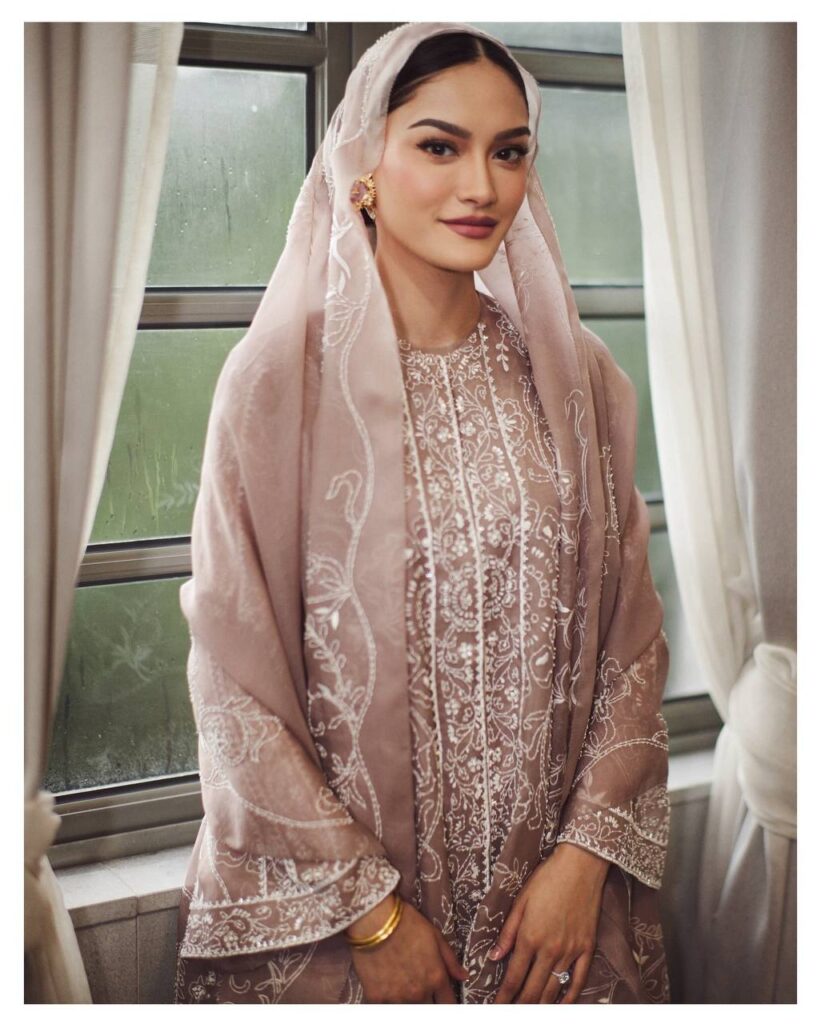

(Credit: Moza Wahyu)
The khatam Qur’an ceremony took place on 5 October at Taman Duta, Kuala Lumpur, according to Kesultanan Pahang, and was graced by the presence of Tengku Ampuan Pahang Tunku Azizah Aminah Maimunah Iskandariah.
Khatam Qur’an, usually held by the bride’s family, is one of the significant customs among the Malays as it serves as a reminder of blessings and a gesture of gratitude to Allah SWT. Besides that, it recognises that the bride has completed the recitations of the whole Qur’an.
In this ceremony, Tengku Natasya was seen wearing a custom dusty pink ensemble—a creation by Biyan Wanaatmadja, an Indonesian fashion designer. The dress is embroidered with intricate details, and patterns of ferns indicate the Java motifs, thus highlighting Tengku Natasya’s Javanese roots.
- Siraman (bathing) and Midodareni (visiting the bride) ceremonies
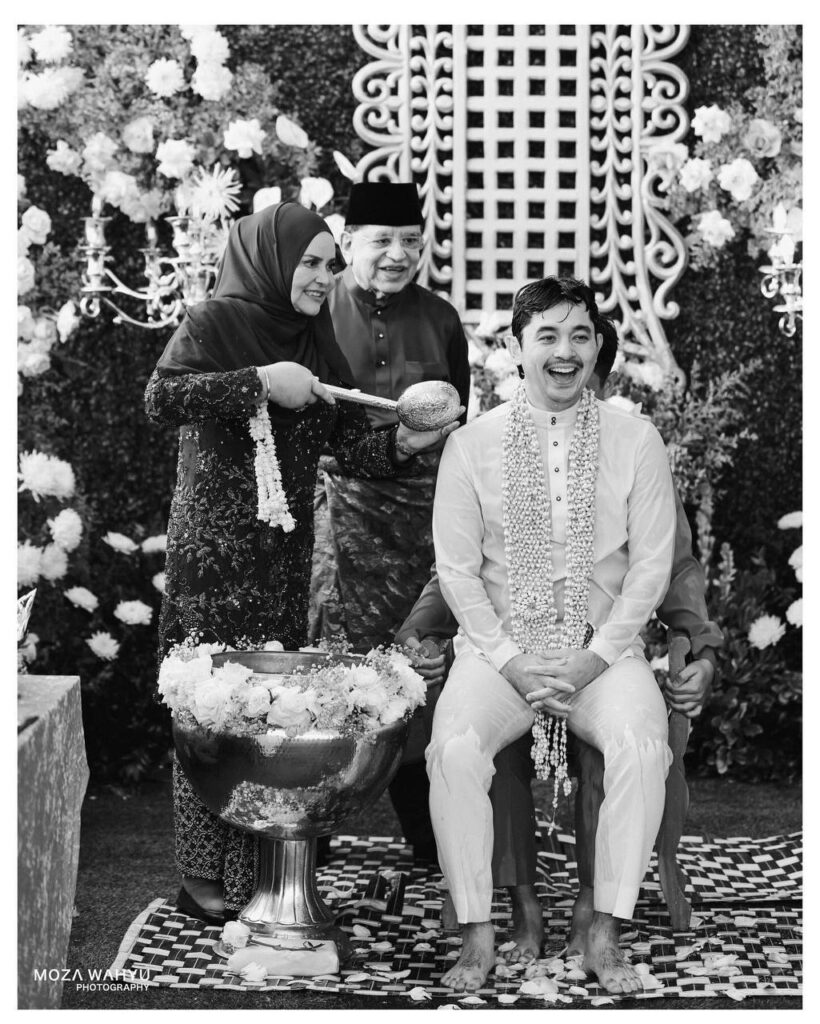
(Credit: Moza Wahyu)
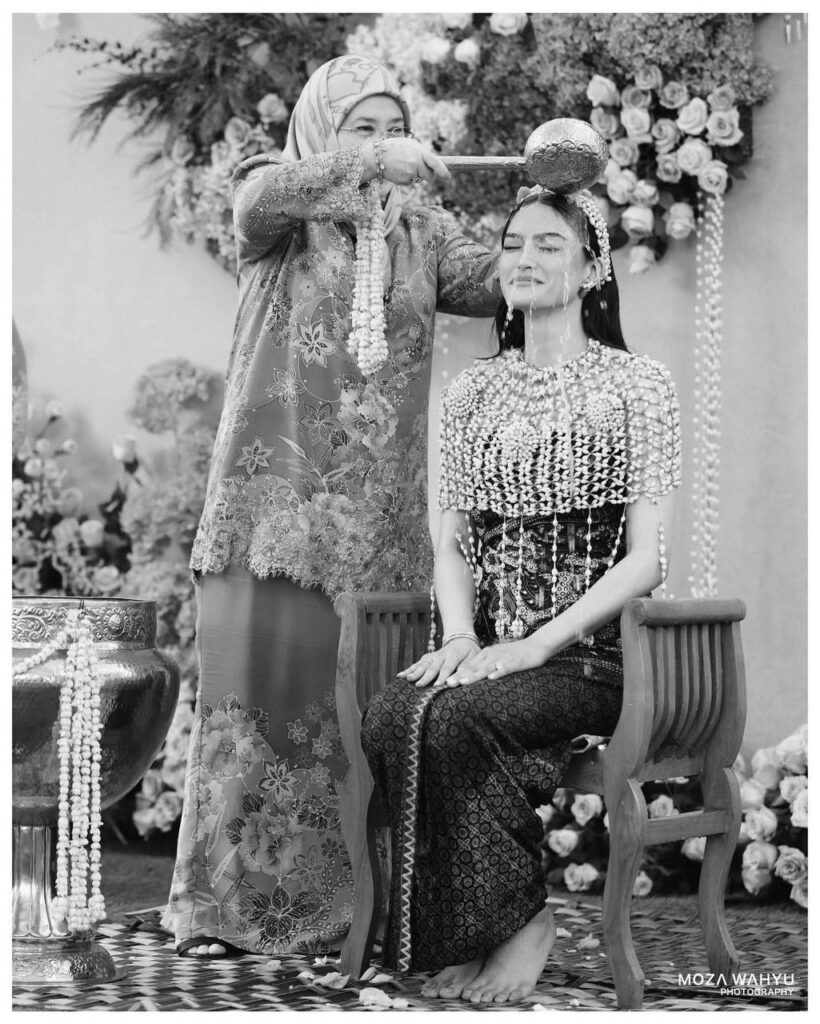
(Credit: Moza Wahyu)
The siraman ceremony took place during the day followed by the Midodareni ceremony at night on 6 October at Taman Duta, Kuala Lumpur, according to Kesultanan Pahang. Both of these ceremonies were graced by Sultan Abdullah Ri’ayatuddin Al-Mustafa Billal Shah and Tengku Ampuan Pahang, Tunku Azizah Aminah Maimunah Iskandariah.
The siraman ceremony is highly traditional as Jessica Levey wrote in ‘The Javanese Siraman Wedding Ritual,’ the word ‘siraman’ comes from the Javanese word ‘siram’ which translates to bathing or cleansing. A popular term would be ‘bridal shower’. Siraman is a ritual commonly practised among the Javanese—typically involving the pouring of flower water over the groom and bride. Siraman is believed to be a ‘spiritual’ preparation for marriage—a symbolic representation of purity before entering the next chapter of life as husband and wife.
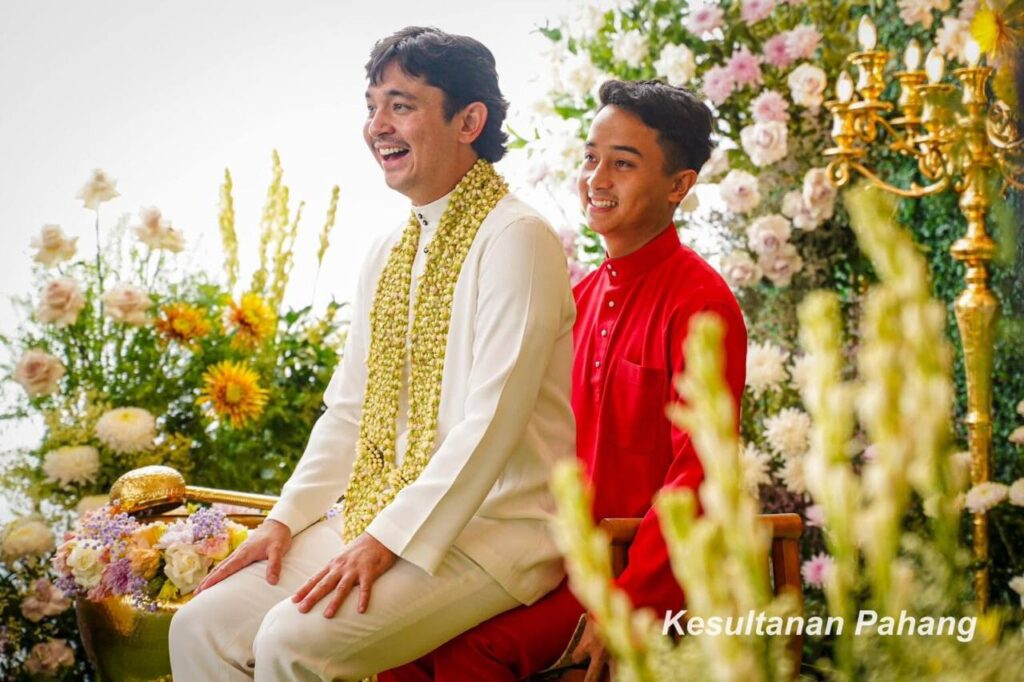
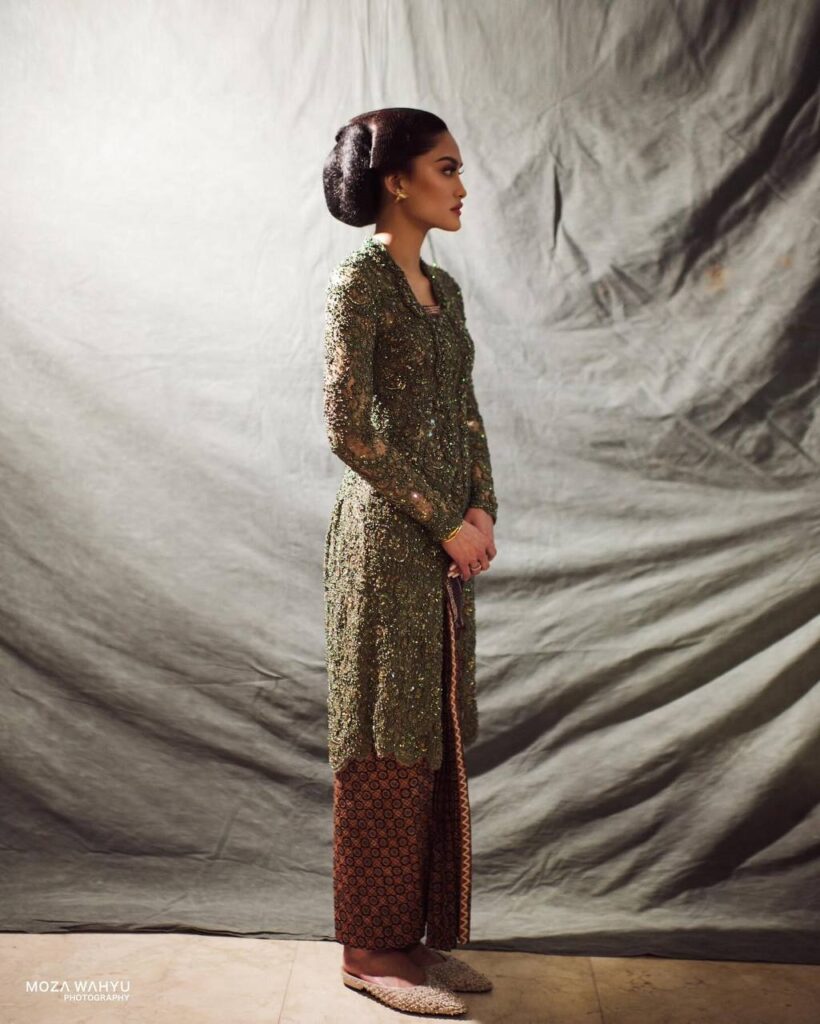
During the ceremony, Tengku Muhammad was suited in pure white attire and was seated on a chair, accompanied by Tengku Ahmad Ismail Mu’adzam Shah.
Tengku Natasya, on the other hand, was dressed in a moss green Java-themed custom attire called ‘kebaya‘—beautifully made by Julianto, an Indonesian couturier. With floral motifs, exquisite lace, and crystal-like beadings all over, Tengku Natasya truly embodies elegance and tradition.
Moreover, the siraman ceremony was enhanced by the traditional music of gamelan and caklempong. The siraman was performed by close family members as well as other close-related figures.
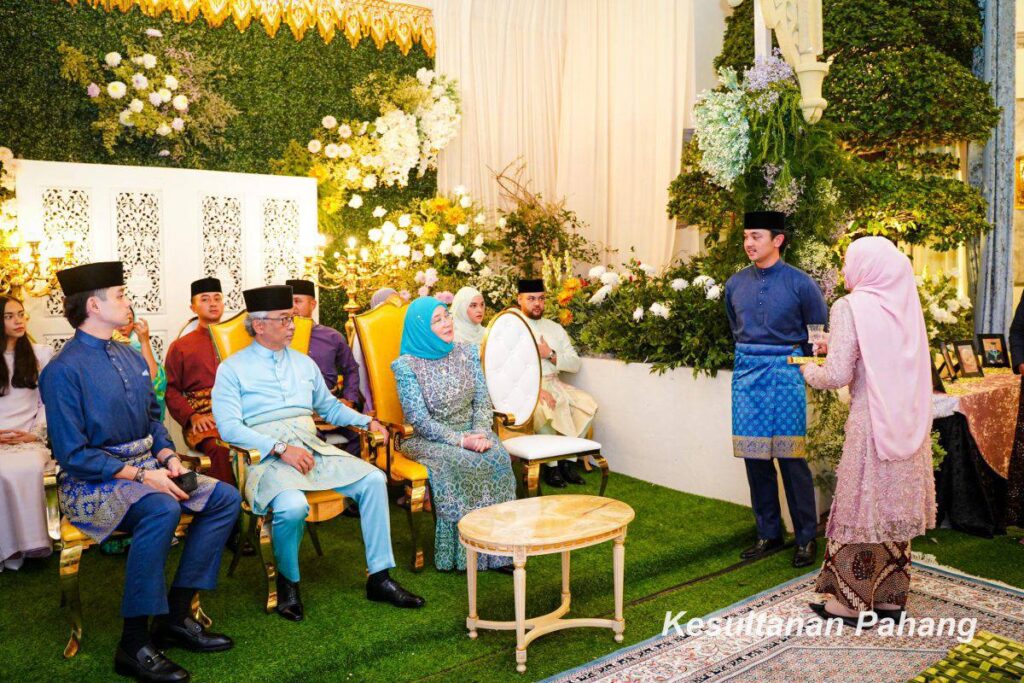
(Credit: Kesultanan Pahang)

(Credit: Kesultanan Pahang)
Following the siraman ceremony, the Midodareni—a traditional Javanese custom held that night—is meant to strengthen the bond and foster good relationships between the bride and groom’s families. According to an article titled, ‘Traditional Javanese Wedding Rituals and their Modern Interpretations,’ the bride and groom were kept apart during Midodareni—the bride spent the night with her female relatives while the groom with his male counterpart. This separation symbolises their last moments of individuality before becoming a married couple.
In this ceremony, Tengku Muhammad Iskandar’s family arrives at the bride’s place and is warmly welcomed by her family. Following this, Tengku Muhammad Iskandar formally seeks the blessings of the bride’s family by requesting Tengku Natasya’s hands in marriage, to which her family responds.
- Ijab Qabul (solemnisation) ceremony

(Credit: Hian Tjen)
The Ijab Qabul ceremony is the most important event as it officially declares Tengku Muhammad Iskandar and Tengku Natasya as husband and wife. Solemnised by the bride’s father, Datuk Seri Tengku Adnan Tengku Mansor, this ceremony took place on 24 October at Balai Mahkota Istana Abdulaziz Kuantan, Pahang, as reported by Kesultanan Pahang.
Before the solemnisation, another ceremony, Meletak Kerja (initiation of duties) ceremony was held—a tradition introduced by the late Sultan Abu Bakr—to announce the beginning of official preparations before the ceremony begins, in this case, the solemnisation, according to Metro. The Meletak Kerja ceremony took place at Istana Abdulaziz Kuantan, Pahang with 16 cannon shots fired at 9.30 am on 22 October to mark the beginning of the ceremony, with Tengku Panglima Raja Brig Gen Tengku Amir Nasser Ibrahim Shah scheduled to recite the proclamation of the initiation of duties and hoisting the ceremonial flag, according to Bernama.
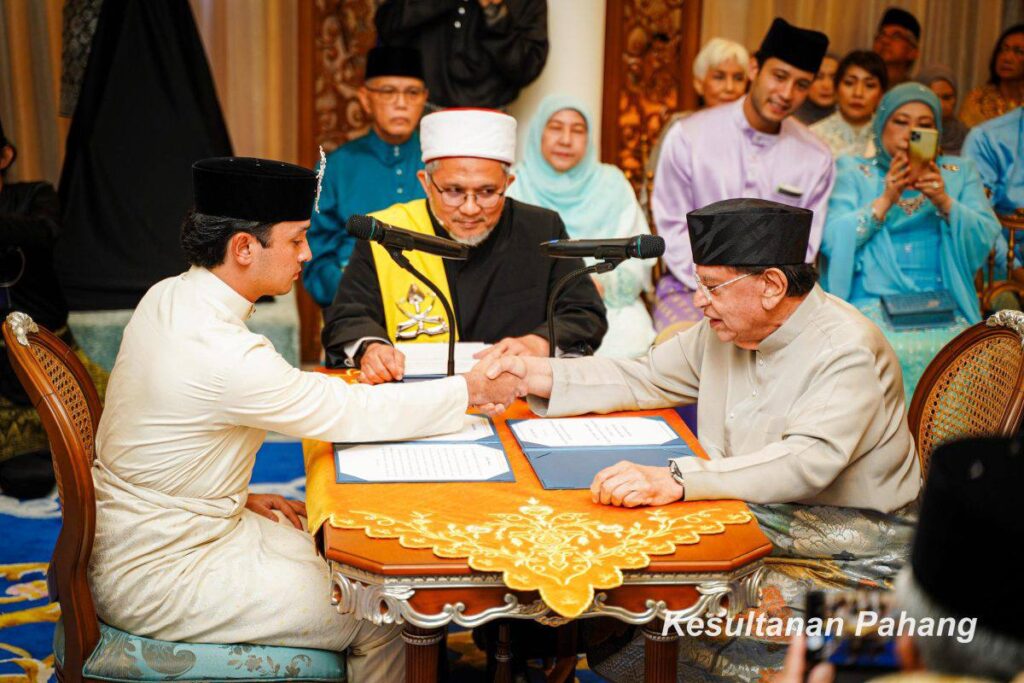
(Credit: Kesultanan Pahang)
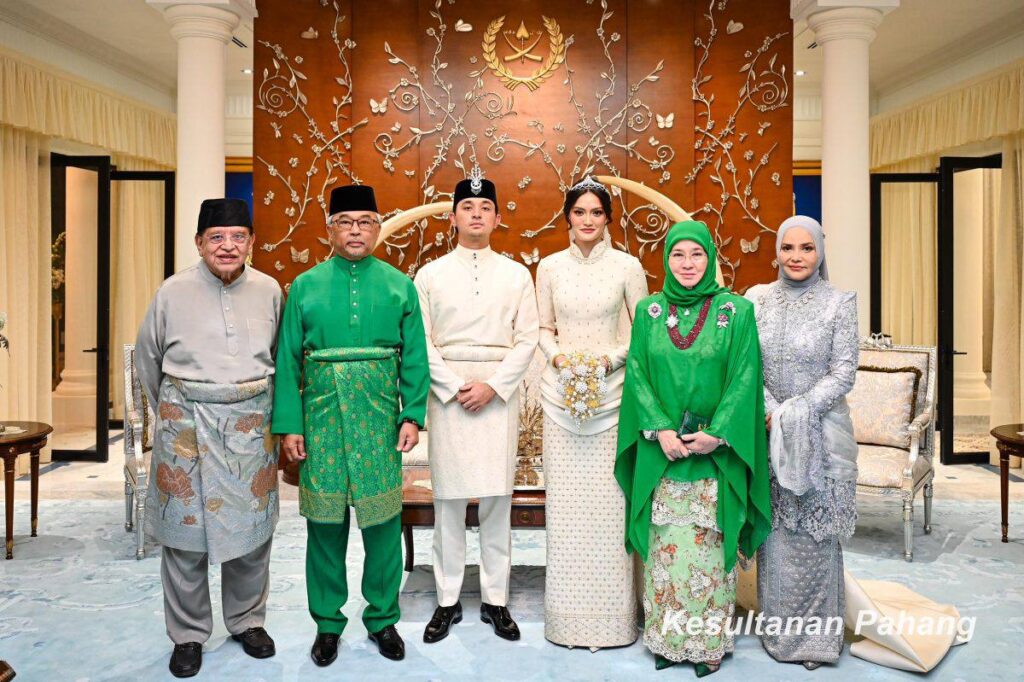
During the solemnisation, Tengku Muhammad Iskandar looked dashing in a white Baju Melayu (traditional Malay attire) complete with a songket samping while Tengku Natasya radiated sophistication wearing Hian Tjen’s creation, another Indonesian couturier. Her white long-sleeve gown with a Mandarin-designed collar, delicate motifs, and gold detailing, adding a luxurious yet minimalistic touch. In addition, the white Tenun Pahang DiRaja designed by Tengku Ampuan and woven by inmates of Penor Prison not only complemented her look but also captured Pahang’s handcrafted artistry.
- Malam berinai (henna night) ceremony
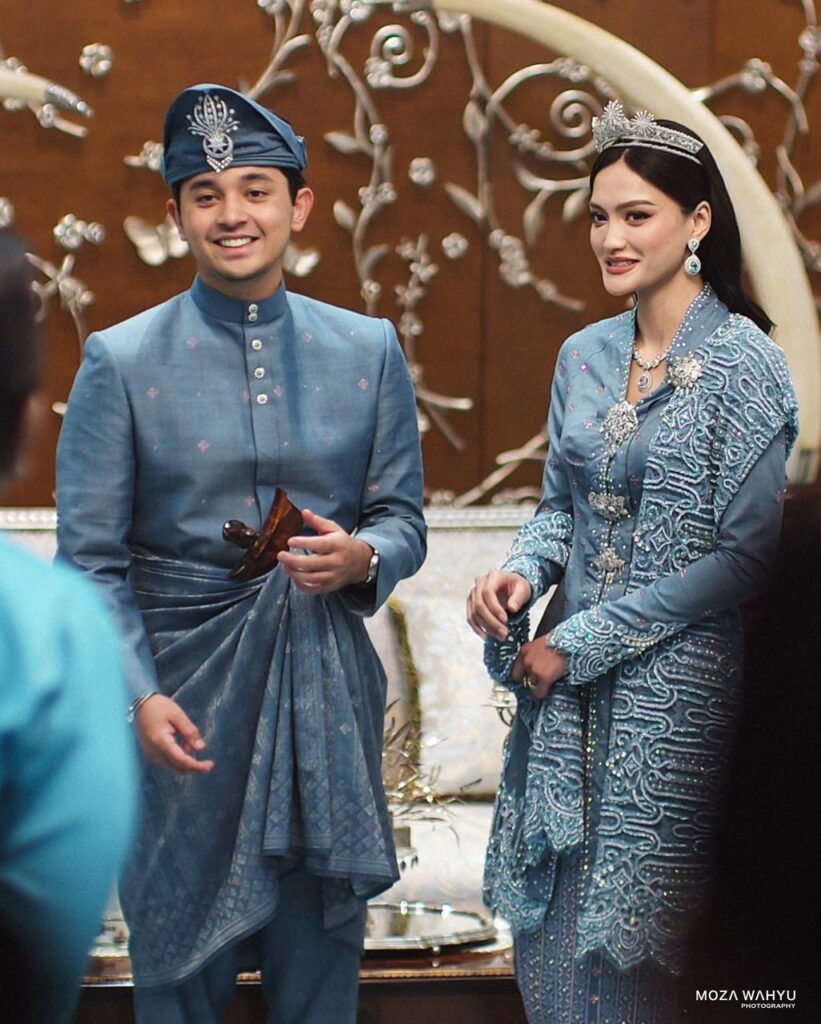
(Credit: Moza Wahyu)
Following the solemnisation, the malam berinai ceremony was held on 25 October at Balai Temenggong Istana Abdulaziz Kuantan, Pahang. The ceremony began with the bride, Tengku Natasya, being escorted to Balai Mahkota at 8.20 pm where Tengku Ampuan Pahang, Tunku Azizah Aminah Maimunah Iskandariah, graced the event by applying henna onto the bride’s palms as a symbolic gesture marking the start of the ceremony, according to The Star.
Based on Mas Ayu Syahimi’s article, “Berinai kini jadi trend” the application of henna is renowned—especially among the Malay and Indian cultures and traditionally involves only close family members. Now the henna night ceremony has evolved into a grand celebration as many position it as equally important as the wedding day itself.
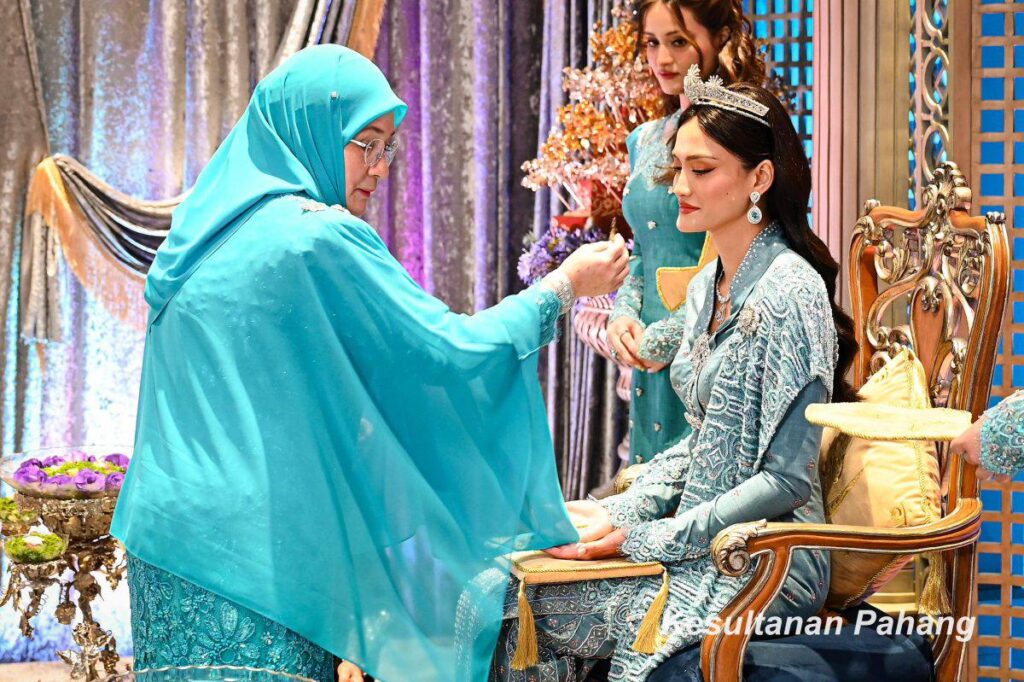
(Credit: Kesultanan Pahang)
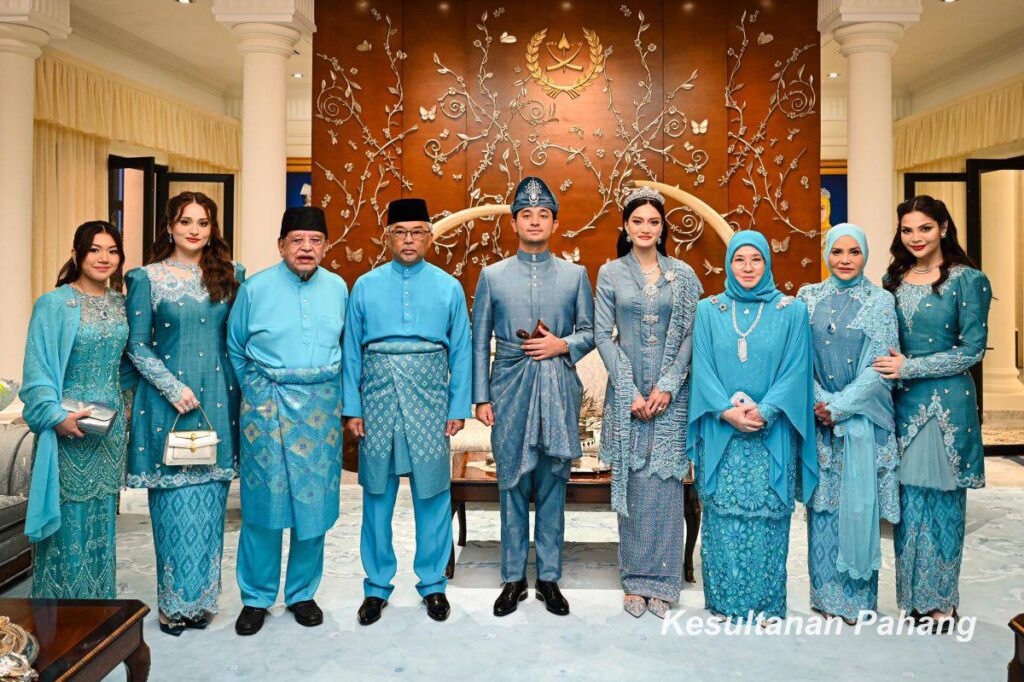
(Credit: Kesultanan Pahang)
During this ceremony, both Tengku Muhammad and Tengku Natasya’s families were clothed in turquoise while Tengku Muhammad and Tengku Natasya looked like a match made in heaven—as both wrapped in blue. Tengku Muhammad wears a complete baju melayu with a tengkolok and a keris, and Tengku Natasya dons on Ivan Gunawan’s blue kebaya, another Indonesian couturier. The silver hues from her crown, flowers, and shoes complemented her look perfectly—both, Tengku Muhammad and Tengku Natasya seamlessly blending Malaya and Javanese cultural elements.
- The wedding ceremony (Tengku Muhammad’s side)
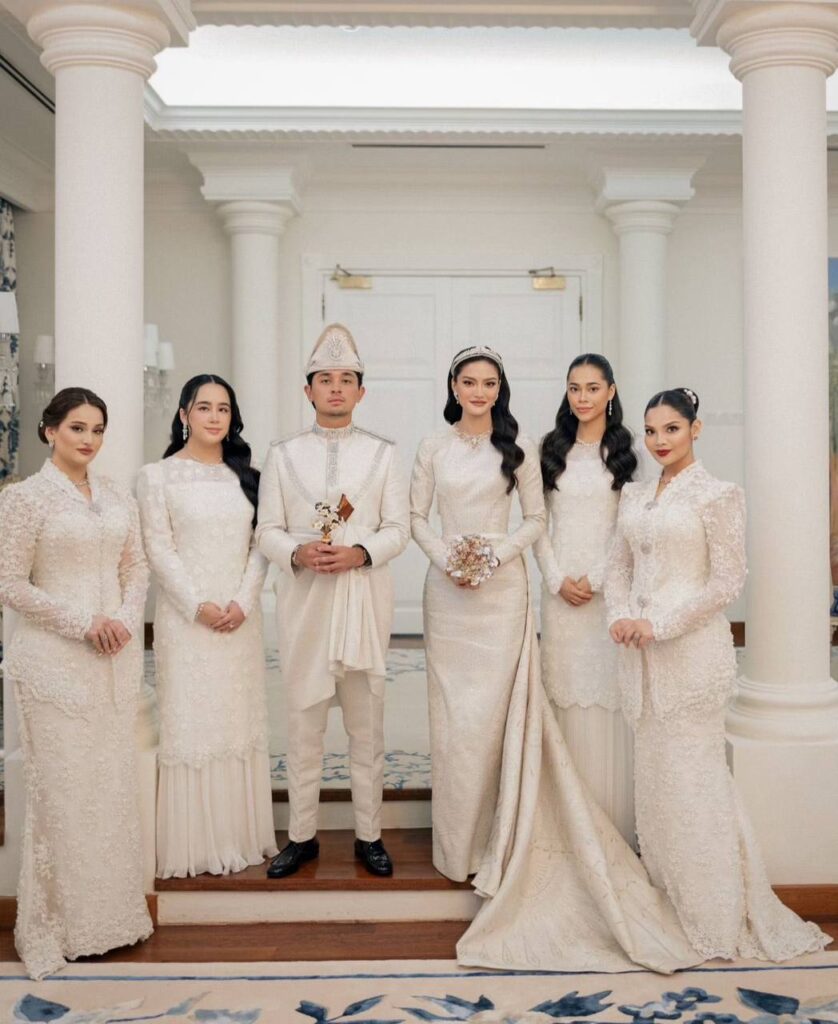
(Credit: Moza Wahyu)
The official wedding ceremony of the royal couple took place on 27 October at Balai Temenggong Istana Abdulaziz Kuantan, Pahang. According to Sinar Harian, as part of the royal tradition, 16 attendants lit candles, each being ignited before Tengku Natasya entered. Tengku Muhammad was then brought into the balai along with Sirih Lat-Lat (small bouquet of flowers), which was then presented to Tengku Natasya to signify that the wedding ceremony had begun.
The wedding was officially commenced by Sultan Abdullah Ri’ayatuddin Al-Mustafa Billal Shah, who graciously sprinkled floral-infused fragrant water over the newlyweds and was followed by other family members as well.
The wedding concluded with the placing of Pancabicara (a decoration piece with five branches) also by Sultan Abdullah Ri’ayatuddin Al-Mustafa Billal Shah on the heads of the newlyweds and recitation of prayers by the Mufti of Pahang, Professor Dato’ Dr. Asmadi Mohamed Naim before the royal couple departed from the balai.
- Post-wedding ceremonies
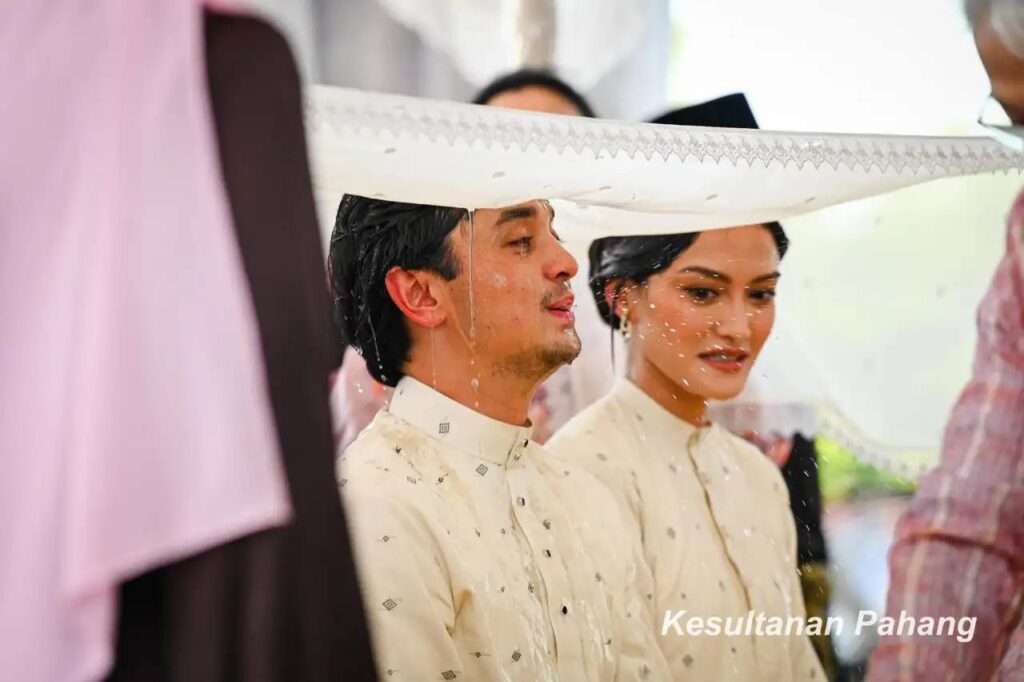
(Credit: Kesultanan Pahang)
As reported by Kesultanan Pahang, the post-wedding ceremonies include Santap Nasi Adap-Adapan (eating of rice), Bersiram (bathing), and Menutup Kerja (closing of duties) ceremonies which all took place on 28 October at Istana Abdulaziz Kuantan, Pahang.
The Nasi Adap-Adapan ceremony began with Tengku Ampuan Pahang, Tunku Azizah Aminah Maimunah Iskandariah, performing the ‘spirit rice feeding’ for the royal couple, followed by the sprinkling “renjis” and bersiram ceremonies.
Before bersiram, a prayer was recited by Mufti Pahang, Professor Dato’ Dr. Asmadi Mohamed Naim. The tea reception was held afterwards along with the Menutup Kerja (closing of works) ceremony by lowering the flag—signifying all the official events had been completed. Again, similar to the Meletak Kerja (initiation of duties) ceremony, 16 cannon shots were fired, followed by a prayer from the mufti, according to Bernama.
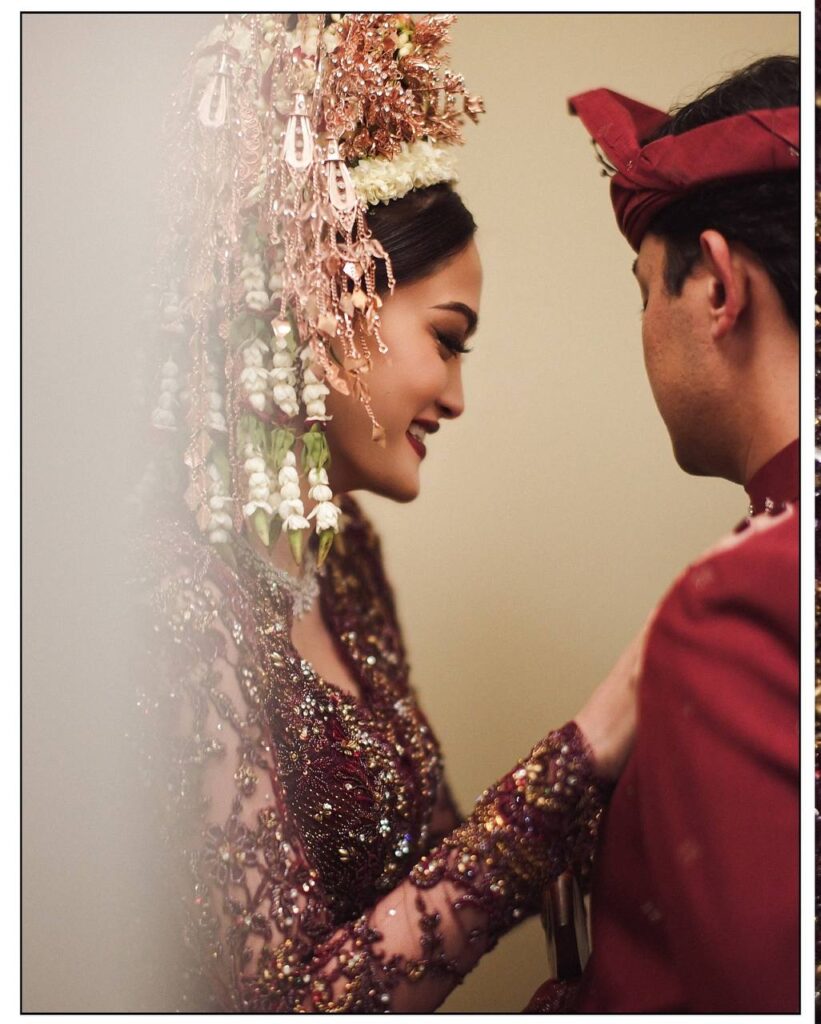
(Credit: Moza Wahyu)
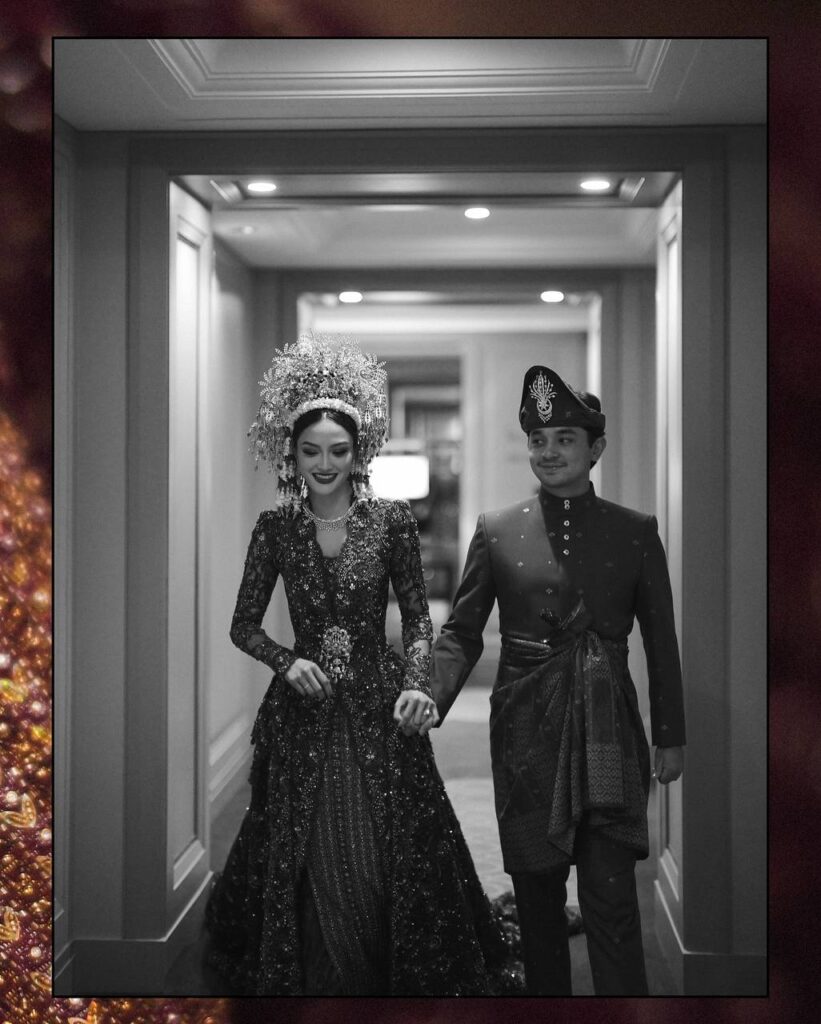
According to Kesultanan Pahang, the wedding of the royal couple continued on 30 October 2024 at St. Regis hotel, Kuala Lumpur. Both Tengku Muhammad and Tengku Natasya were strikingly dressed in maroon. Because the wedding was held by Tengku Natasya’s side—the Aceh theme was vibrantly present—from the wedding attire, decorations, foods, and entertainment.
While the previous wedding which was held in Pahang featured the sprinkling “merenjis” ceremony, this time, it was replaced with a “salam restu” (handshake to seek blessings) ceremony—showcasing the rich tradition of Aceh, as part of Tengku Natasya’s lineage.
On top of that, the event also featured Indonesian performances, one of them being tarian saman performance—a popular dance from Aceh, Indonesia—performed by students from the Kuala Lumpur Indonesian School. Popular indonesian artists also present to perform like Datuk Seri Rossa, Sal Priadi, Vina Panduwinata, and Tasha Band, according to Awani.***
- 5 key takeaways from Nouman Ali Khan’s IIUM lecture, ‘Agenda for the Next Generation’ - May 27, 2025
- FLIC’s new president promises creativity and inclusivity - January 9, 2025
- TESL students dress to the nines at TESL Night 2024! - January 9, 2025
